What to plant for happier chickens
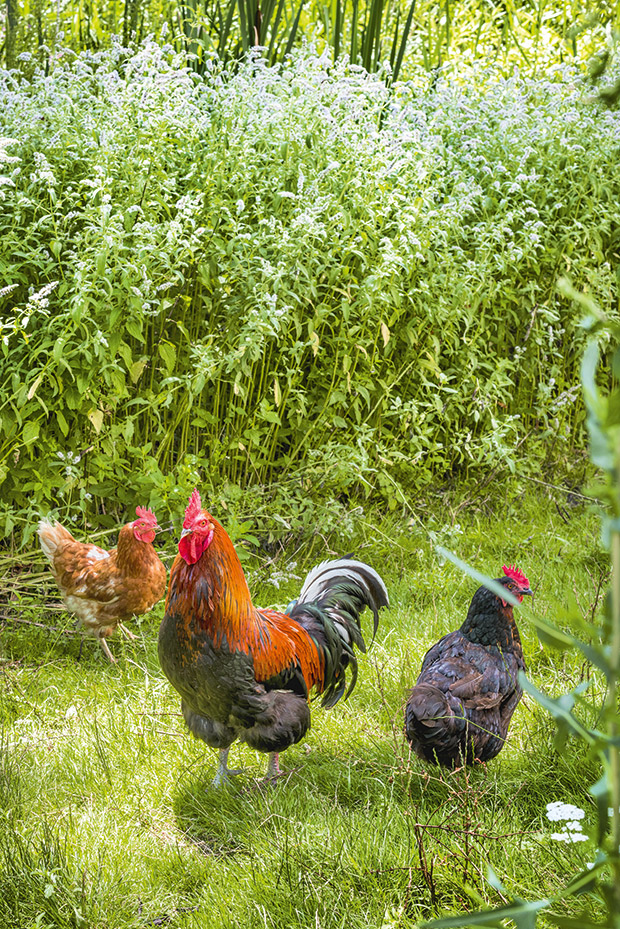
The ideal poultry habitat is full of trees, shrubs, perennials, and annuals, which provide shelter, protection, and nutrition.
Words Nadene Hall
If they have the choice, chickens prefer wooded areas, avoid bright sun, and will stay close to their housing, tree cover, or other shelter. Research into red jungle fowl in India, the closest wild relatives of domestic poultry, shows they prefer:
■ young forests;
■ where forests meet fields
■ scrubby/shrubby areas;
■ bamboo forests;
■ patches of tall grass for nesting;
■ cultivated fields.
It’s often not practical to plant forests of trees and bamboo, but running poultry under trees in an orchard or food forest has a lot of benefits. UK research compared poultry free-ranging in areas with 20 percent tree cover with those on tree-free ranges. It showed hens living with tree cover:
■ roamed further, so manure was more widely spread, helping to maintain soil and plants in the range, and causing less parasitic contamination;
■ produced eggs with better shell quality, and there were less ‘seconds’ during collection and packing;
■ had better health and welfare;
■ had lower levels of feather pecking causing injury;
■ had lower mortality, as birds had plenty of places to hide from threats, eg hawks.
Other bonuses were less mud, less contaminated run-off getting into waterways, and an overall improvement in farm biodiversity.
Trees for poultry The same UK research found:
■ the best spacing for trees on a poultry range is 2m apart, in rows 4m wide;
■ plantings should start near the coop and go out onto the range to encourage poultry to move away from the coop;
■ fast-growing trees such as poplar and willow worked well, plus they could be pollarded to prevent trees from getting too tall and creating too much shade. To pollard a tree, the trunk is cut off at about head height; it then sprouts lots of stems, creating an umbrella effect. This also helps pasture plants under the canopy to thrive.
■ it was best to avoid adding bushy plants with foliage down to ground level as this habitat encouraged birds to lay outside the coop;
■ trees could provide an additional cash crop, such as fruit, nuts, and firewood.
The following are trees that also provide nutritious feed for free-range poultry.
6 trees to plant for poultry
These trees produce good poultry forage. Most can be ‘chopped and dropped’ for mulch, creating habitat for high-protein insects too.
TAGASASTE
Also known as: tree lucerne, Chamaecytisus proliferus var palmensis, Cytisus proliferus
Soil: free-draining, can tolerate pH 5.0-7.5
Climate: hot, dry summers, wet winters, will tolerate frosts down to -10°C
Feed value: leaves 23-27% crude protein, low fibre
There are few trees as useful as tagasaste (pron. tag-a-sar-stay) if you have livestock. The leaves are highly nutritious, with a feed value similar to a ryegrass-white clover pasture and lucerne hay.
Tagasaste is a fast-growing, frost-tolerant, nitrogen-fixing tree that can reach its full size in just three to four years. It provides shelter, shade, and flowers from late autumn through to spring. Bees love its high-quality nectar and pollen. The mature wood is excellent firewood, which burns very hot.
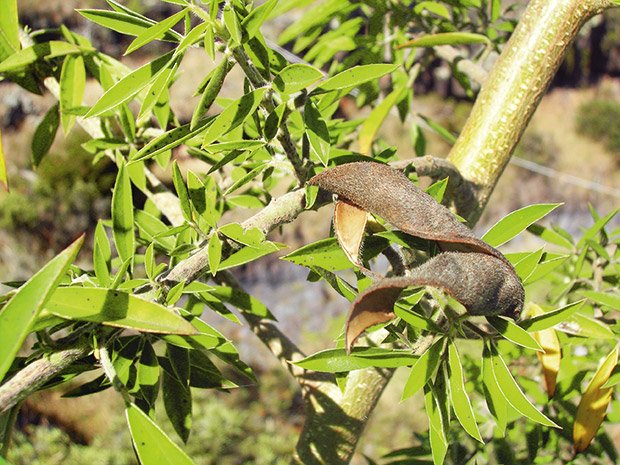
Tagasaste fixes nitrogen in the soil, and provides fodder.
If pruned, it becomes a low shrub; if allowed to grow unchecked, it reaches 3-5m. It tends to form multiple, leafy stems, spreading out as it matures. It’s resistant to foliar diseases, and will quickly recover from complete defoliation.
Tagasaste’s deep roots (down to 10m in good conditions) mean it’s drought tolerant. Trials have shown it will put up with high moisture levels in soil but will die if its roots become waterlogged. The foliage contains a high level of protein, vitamins, and minerals when grown in ideal conditions, but its nutritional value is lower in poorer soils.
There are a few drawbacks:
■ seedlings aren’t frost-tolerant;
■ rabbits, hares, and possums often eat young plants, so they need protection;
■ it needs pruning to keep it bushy;
■ its lifespan is fairly short (15-18 years);
■ it can become invasive in some areas.
TREE MEDICK
Also known as: Medicago arborea
Soil: rocky, light to heavy, free-draining
Climate: does well in hot, dry summers, suits coastal conditions, frost-tender, not cold hardy
Feed value: foliage is 18-20% protein, low fibre, high digestibility, more palatable when young
Tree medick is slow-growing compared to tagasaste, but also fixes nitrogen, and does well in tough soil conditions. It grows to about 2m x 2m and produces high protein, low fibre leaves. Its beautiful, bright yellow flowers are strongly scented, similar to vanilla or sweet peas, and are a great food source for bees from late winter to mid-spring.
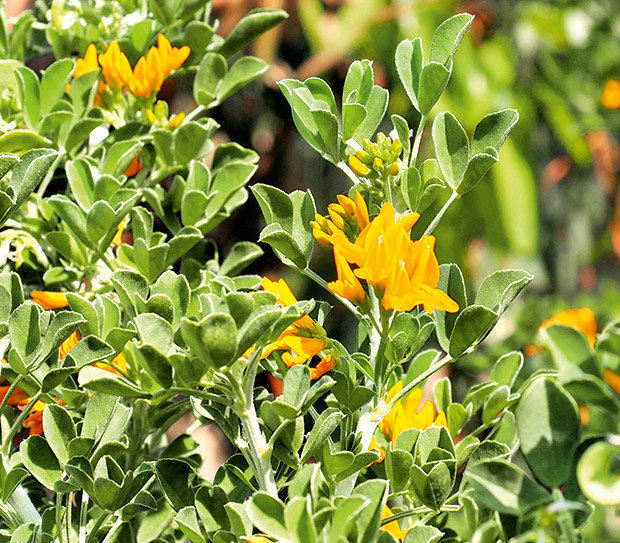
The young leaves of tree medick are chewy, but can be added to salads. Older leaves are very bitter.
Tree medick is best harvested as feed (chopped and dropped) when stems are young (before they turn woody), and its nutritional value and palatability are at their highest. It also has large seeds that provide an extra food source for poultry. Trials in NZ at the Ballantrae research farm (30 minutes north-east of Palmerston North) in 1989 showed it did not tolerate wet soil.
Other drawbacks:
■ not shade-tolerant;
■ susceptible to aphids;
■ slow-growing compared to other options, such as tagasaste.
SWAMP WATTLE
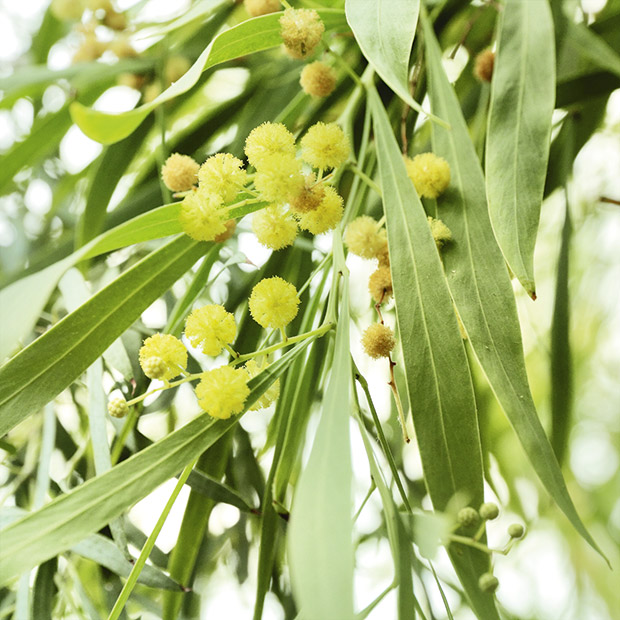
Also known as: Acacia retinodes, wirilda
Soil: dry, sandy soil, but also tolerates boggy areas and occasional flooding
Climate: tolerates full sun, shade, and light frosts
Feed value: seeds approximately 26% protein, more fibre than soybeans (32%)
Fast-growing swamp wattle does well in dry to boggy conditions. It’s puffy yellow flowers emerge in spring, and the nectar is popular with bees, butterflies, and birds. It grows to around 5-8m, with a 5m-wide canopy, but if pruned (after flowering), it forms a compact bush.
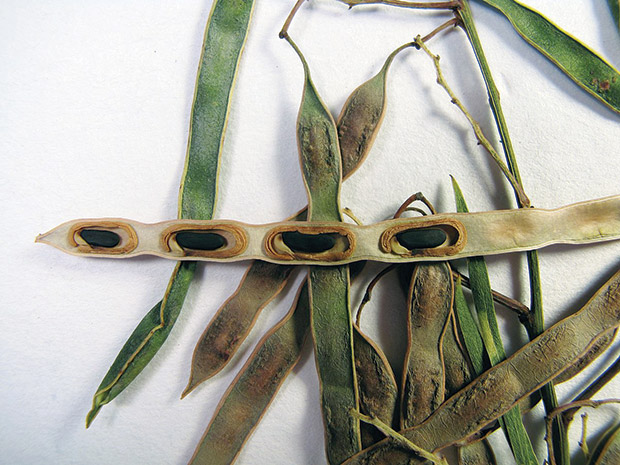
Swamp wattle’s seed pods are up to 18cm long and contain nutritious, high-protein seeds. The seeds can be eaten by people, birds, and stock, and ground up to make a caffeine-free coffee-like drink.
The nutritious seedpods are high in protein, carbohydrates, fibre, and unsaturated fats. The flowers are edible (and taste good fried in batter).
SIBERIAN PEA
Also known as: Caragana arborescens
Soil: light, sandy, dry, or well-drained
Climate: prefers cold winters (being a native of Siberia), but new spring growth can be frost-tender
Feed value: seeds can be up to 36% protein, and are high in fat (12.4%)
The Siberian pea is a very hardy, slow-growing, nitrogen-fixing deciduous tree. It produces large amounts of nutritious, high-protein seeds in early summer. It flowers in early spring and is an excellent bee food, producing a fruity honey.
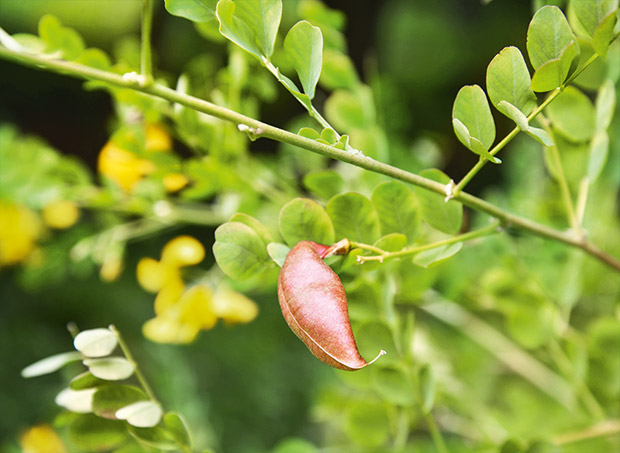
The trees make a good hedge. Their extensive root system is also useful for erosion control. Pods contain 4-6 seeds and split open when ripe. The trees drop pods over many months and are very popular with poultry. British permaculture expert and author Patrick Whitefield reported seeing chickens jumping up to pull the pods off branches. The seeds make good food for people too. Raw and cooked seeds taste like a bland pea. The yellow flowers are edible, also contributing a pea flavour when added to salads.
TAUPATA
Also known as: Coprosma repens, NZ mirror plant
Soil: poor, dry, sandy
Climate: tolerates exposed, dry conditions (and drought once established), frost-tender
Feed value: berries are high in vitamin C, very popular with poultry and other birds when ripe, and foliage makes good livestock fodder
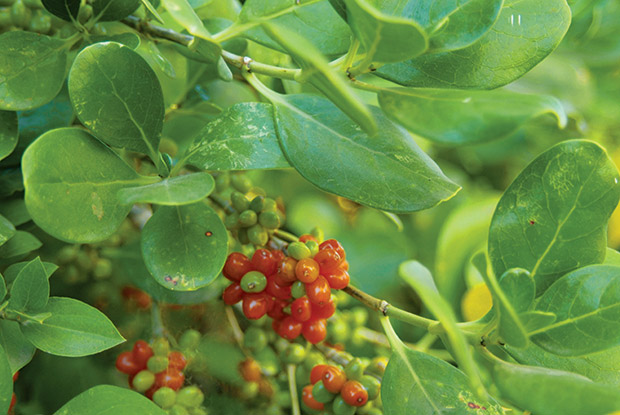
Taupata is a large shrub (2-5m high, up to 3m wide), which is a good windbreak. Its shiny leaves reflect heat and light, making it fire-retardant. It can grow up to 5m high in ideal conditions, but when pruned, it forms a dense hedge. Taupata is prone to phytophthora (root rot), black spot, and rust in humid conditions. The red-orange berries ripen in autumn.
THORNLESS HONET LOCUST
Also known as: Gleditsia triacanthos v. inermis
Soil: all types, but does best in free-draining soil
Climate: cold to subtropical, frost-tender when young, but very hardy and drought-tolerant once established
Feed value: high protein foliage when coppiced, each tree produces 20-75kg of high protein (10-24%) pods once mature (8+ years) in late summer-autumn.
Leaves of the thornless honey locust turn from green to stunning yellow in autumn. The flowers are a good source of nectar for bees. The wood is excellent firewood, and can be used as fencing posts. It also produces large, edible seed pods.
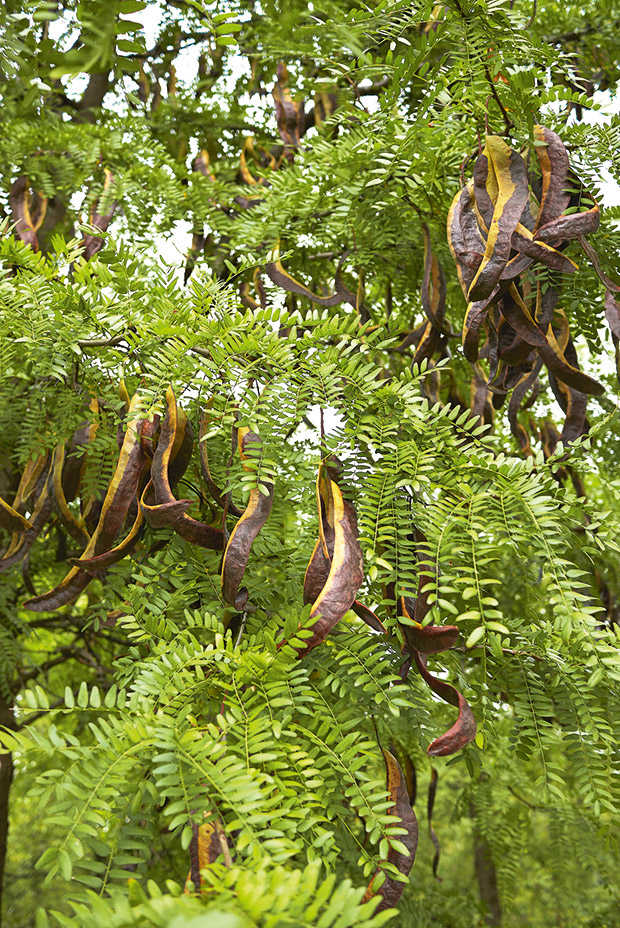
It will grow up to 20m if unpruned, but it can be coppiced, regrowing vigorously. Coppiced foliage is higher in protein than non-coppiced, and is a good ‘chop and drop’ feed for livestock during a dry summer.
It doesn’t have the nitrogen-fixing nodes on its roots found on other legumes, but research shows it does fix nitrogen. Nb: this tree looks similar to the more invasive Robinia pseudoacacia.
Love this story? Subscribe now!
 This article first appeared in NZ Lifestyle Block Magazine.
This article first appeared in NZ Lifestyle Block Magazine.
